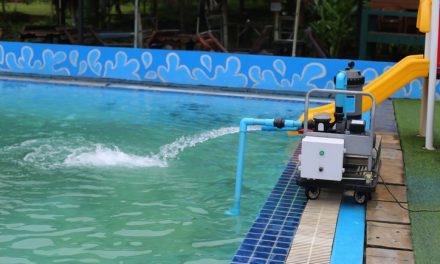Spring has sprung, and with it comes all sorts of sewer conditions you’ll have to consider in order to best take care of your sewer system. Between spring rains, animals coming out of hibernation, and vegetation starting to grow, you will need to make sure your sewer pipes stay clear and clean in order to function properly. Not sure where to start? Here are some common spring sewer issues and how to prevent them.
1. Spring Rains Can Lead to Flooding
April showers are a well-known springtime event, but did you know they can overwhelm your sewer system? The ground is often still cold from winter and isn’t able to completely absorb the water. Even if it can absorb the water, it can easily become oversaturated by a particularly rainy season. With nowhere else to go, excess water can seep into the foundation of your home and flood your basement. If too much water enters storm drains and ends up in the main sewer line of your city, that water can also back up into your home.
How do you prevent flooding from heavy spring rains?
A sump pump in your basement is one way to manage any excess water that manages to get inside your home. Sump pumps pump water out of your basement and back into your sewer line. It’s also important to make sure that your sewer pipes are slightly angled away from your house so that gravity can help water move in the right direction.
2. Damaged Sewer Pipes
You may not have realized over the winter that the pressure from snow and ice buildup in your pipes actually created some damage. If you start noticing that your water doesn’t drain properly or you develop leaks, damaged pipes could be to blame. It may not seem like a big deal if you have a small leak or a slowly-draining tub, but any damage causing the issue will only get worse over time–and more expensive to fix.
How do you prevent damaged sewer pipes?
You may not be able to completely prevent damage from occurring, but you can certainly intervene when the damage is small and manageable by having a sewer inspection done regularly to assess the condition of your sewer pipes. If you do notice an issue, call a professional for repairs right away.
3. Tree Roots and Vegetation in Sewer Pipes
As greenery starts growing again in the spring months, the roots seek out damp places with oxygen and nutrients to drink up much-needed nutrient-rich water. You know which places are full of oxygen, nutrients, and water? Your pipes! Roots are actually attracted to your pipes because of all the water, and, over time, they can actually poke through your sewer pipes and continue to grow there. The more growth ends up in your pipes, the more they clog the area and can cause a backup.
How can you prevent tree roots from causing a backup in your sewer pipes?
If you are the one planting the trees, make sure to plant them far enough away from your sewer pipes so that they can’t encroach on that area. Smaller trees can be planted as close as 20 feet away, but large trees with substantial root growth need to be planted about 100 feet away. However, most homeowners already have trees on their property and are not in control of where those trees are situated in relation to their sewer system. All is not lost, however.
As with damaged pipes, regular inspections of your sewer system will reveal any roots or other vegetation that’s gotten into your pipes. There are a number of ways to fix pipes from root damage, but if the damage is too extensive, your pipes may need to be replaced. That’s why it’s important to have regular inspections and to contact a professional at the first sign of trouble.
Prevent or Eliminate Spring Sewer Issues With Professional Help
Though sewer pipes can be affected by a number of springtime conditions, there are many ways to keep your pipes healthy and in good working order. The professionals at A&L Cesspool can perform inspections and repairs whenever you need them so that spring sewer issues will be kept to a minimum or even eliminated!









